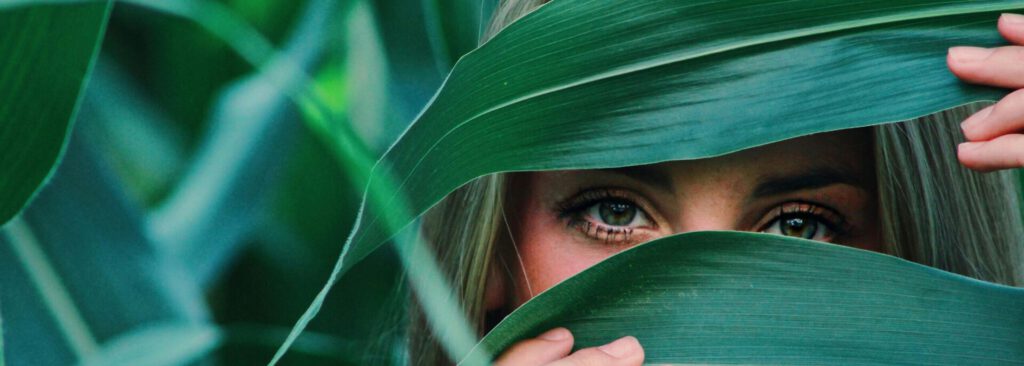So you want your photos to attract attention? Then you should know how images are registered and processed by our brain. If you understand how visual perception works in photography, you can optimize your photos accordingly.
Page Contents
The power of the eyes
Seeing is more than just translating optical signals into nerve impulses. Our perception is primarily focused on survival. The most important factor for survival is the people in our immediate environment.

Their faces, and especially their eyes, convey a friendly or hostile attitude to us. So our brain always focuses on faces first. That’s why we are magically drawn to faces and eyes in photos.
Our visual system
Ultimately, the perception of the present is an individual experience that is influenced by many different factors. Sight is certainly our most important sensory perception. We receive around 80 percent of the information about the environment through our eyes. Visual perception is our brain’s way of understanding the world through visible light. This fascinating ability uses about 30 percent of our brain’s cortex.
A flood of information about the environment continually flows into the various interconnected parts of the central nervous system, all of which are involved in vision, whenever the eyelids are open. This allows us to recognize shapes, contours, differences in brightness, movements, objects and people.
The six stages of visual perception
The perception process can be simplified into several interdependent steps. Here is a simple example using the sight of an apple to illustrate these steps:
- Reception: Your eyes capture the light reflected from the apple, which hits the retina.
- Transduction: Photoreceptors (cones and rods) in the retina convert the light into electrical signals.
- Transmission: These signals are sent via the optic nerve to the brain, specifically to the visual cortex.
- Selection: The brain filters relevant information, like the apple’s shape and color, ignoring irrelevant background details.
- Organization: The brain organizes the information, recognizing the round shape and red color as features of an apple, distinguishing it from other objects.
- Interpretation: Based on experience and context, the brain concludes that this is an edible apple, perhaps even a specific variety.
If you want to know more details about how our human perception works in detail and how significantly it differs from the function of a camera, I recommend Anthony Waichulis’ excellent blog post.
Creating connections
Our visual system creates connections. The visual data is repeatedly converted, filtered, analyzed, re-sorted and evaluated. This goes far beyond mere sensory impressions. Only when this visual information is linked to existing knowledge what is seen becomes meaningful.
The red tori arch in the following picture is largely hidden by a flowering weeping willow. Its shape is also distorted by its reflection in the pond. Nevertheless, our brain is able to recognize the red structure as a tori arch. However, we notice that recognition takes a while and we first have to orient ourselves in the picture.
Translating visual perception in photography
Learning plays a big role in this because we can only perceive many things because we know them and have a certain amount of prior knowledge. For example, “back-translating” a two-dimensional image into three dimensions: Theoretically, various three-dimensional objects can be hidden behind the two-dimensional image of an object. The brain often chooses the simplest or most familiar interpretation. In addition to experience, it also takes into account facts such as the incidence of light and shadows.
Next article: Translate these insights into photographic moments.
You can find out more about how human perception works in detail and yet very clearly in the book of Brian Dilg or Ernst Fischer (only in German)

